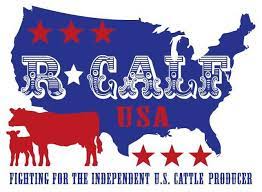Commentary by Bill Bullard, CEO, R-CALF USA
When we think about food trade, many think bananas. And that’s because Americans eat a lot of bananas. But the U.S. climate isn’t suitable for growing bananas and only small volumes are grown in Florida and Hawaii. This means if we want to eat bananas, we have to import them. And we do. The U.S. is the largest importer of bananas from countries like Ecuador and Costa Rica.
Few would argue that importing bananas is bad, because it isn’t, even though we do run a huge trade deficit in bananas – meaning we import far more bananas than we export.
The point is that this exemplifies good trade – the U.S. needs more bananas than it can produce so it imports bananas.
And this is how trade in food started. We imported what we needed but couldn’t produce enough of, and we exported what we produced too much of, and what other countries needed.
But trade evolved. Soon the government recognized the power of its consumer market and began using food trade for political and socio-economic reasons. Jumping to beef, we opened our market up to imported beef from developing countries. The theory was that by giving access to our consumer market, those developing countries would produce and sell more beef and the profits would improve their social and economic standing.
But then food trade evolved even further. Multinational corporations soon realized that if they set up exporting platforms in developing countries the United States was trying to help by giving them access to the U.S. consumer market, then their corporate profits would soar. And they did.
And as multinational corporations exerted their dominance over both trade and politics, food trade evolved once again, into a free trade model – meaning food trade is now essentially deregulated and multinational corporations, for the most part, are free to choose what and where they import and export.
So, U.S. food trade evolved from achieving the wants and needs of Americans. To achieving the government’s social and economic goals. And now it’s to feed the multinational corporate tiger’s insatiable appetite for skyrocketing shareholder profits.
And this highlights an important truth – the pendulum has swung too far, and we must now restore balance to our U.S. trade policies.
Unsurprisingly, those multinational corporations that fueled our evolution to free trade are fighting like tigers to hold on to their gravy train of corporate profits.
Let’s look at the trade in cattle and beef:
Unlike for bananas, the U.S. climate is well suited for raising cattle. And unlike bananas, the U.S. could produce enough beef to feed America’s appetite for beef. But like bananas, it doesn’t.
So why doesn’t the U.S. cattle industry produce enough beef to satisfy America’s beef appetite while it yet exports over 10% of its annual production abroad?
The key is profitability. If it were profitable for America’s cattle farmers and ranchers to produce enough beef to satisfy America’s beef appetite, then they would. But it’s not been sufficiently profitable to do so as evidenced by the long-term declines in the number of cattle operations, the number of cattle in the U.S. cattle herd, and the number of U.S. feedlots.
This evidence is reinforced by U.S. Department of Agriculture data that show long-term lack of profitability for both U.S. cow/calf producers and cattle feeders.
So why the lack of profitability? Well, ground beef is the number one beef product sold in America and multinational corporations such as McDonald’s want to sell that ground beef at the lowest possible price. The way to do that is to source lean, processing beef from wherever they can get it cheapest, say from Australia, New Zealand, Costa Rica and elsewhere. But that imported lean beef isn’t flavorful enough so it’s mixed with trim produced from America’s fed cattle.
Lean beef imports explain why prices for America’s lean cattle – cull cows and bulls, remained relatively low for many years (i.e., until very recently) even while the overall demand for beef has remained strong.
The reason the U.S. continually underproduces for the U.S. market is because our free trade policy enables multinational corporations to substitute domestic beef with imported beef and this helps keep the price of domestic cattle too low to trigger an appreciable increase in domestic cattle production.
Consumers don’t even know this, so they can’t help reverse our unnecessary but growing dependency on imported cattle and beef. Why? Because America does not label beef according to its country of origin. But it would if we pass the American Beef Labeling Act, S.52, and we should.
So, let’s keep importing the bananas we need, but let’s begin labeling our beef so we can watch American ingenuity, entrepreneurialism, and nationalism combine to strengthen America’s food security, which will occur as we become self-sufficient in beef production here in the United States of America.
Source: R-CALF USA














